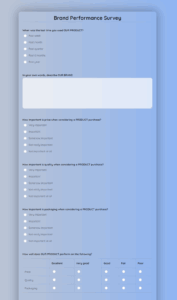Stepping into the world of freelance graphic design is exciting, isn’t it? You get to unleash your creativity, choose your projects, and set your own hours. However, with all that freedom comes a set of responsibilities, and perhaps one of the most overlooked yet crucial aspects of running a successful freelance business is having a solid contract in place. It’s the invisible shield that protects both you and your clients, ensuring clarity and mutual understanding from the get-go.
Imagine starting a project with a handshake and a verbal agreement, only to find yourself caught in a web of misunderstandings about revisions, payment schedules, or even the final deliverables. It’s a common pitfall that can lead to frustration, lost income, and damaged professional relationships. That’s precisely why a well-crafted graphic design freelance contract template isn’t just a formality; it’s a fundamental tool for peace of mind and professional longevity.

Why Every Freelance Graphic Designer Needs a Solid Contract
Think of a contract as the blueprint for your project, laying out every detail before the first pixel is ever placed. It serves as a comprehensive guide that protects your interests as a designer while also providing clarity and reassurance to your clients. Without it, you’re essentially operating in a gray area, where assumptions can quickly turn into disputes, jeopardizing both your work and your reputation.
One of the primary benefits is the crystal-clear definition of expectations. A good contract outlines what services you’ll provide, what the client can expect, and how the entire project will unfold. This eliminates guesswork and ensures that both parties are aligned on the vision and scope, preventing those dreaded “scope creep” situations where projects grow beyond their original parameters without proper compensation.
Financial security is another huge advantage. Your contract specifies payment terms, schedules, and any late payment fees, ensuring you get paid fairly and on time for your hard work. It removes the awkwardness of chasing overdue invoices and provides a clear legal basis if payment issues arise, allowing you to focus on your design rather than your finances.
Furthermore, a contract addresses the specifics of revisions. How many rounds of changes are included in the original fee? What happens if the client wants more? These details, often overlooked in informal agreements, can become significant sticking points. By outlining the revision policy upfront, you manage client expectations and establish clear boundaries for your time and effort.
Finally, intellectual property rights are a critical component for graphic designers. Who owns the final design? Can you use it in your portfolio? Can the client alter it? These questions are explicitly answered in a comprehensive contract, preventing future conflicts and safeguarding your creative output. Having a strong graphic design freelance contract template allows you to address these nuances effectively.
Key Elements to Look For in a Graphic Design Freelance Contract Template
- Project Scope and Deliverables: Clearly define what you will create and what the final outcomes will be.
- Payment Terms and Schedule: Detail how much you will be paid, when, and in what increments. Include terms for late payments.
- Project Timeline and Milestones: Set a realistic schedule with key dates for client feedback and final delivery.
- Revisions Policy: Specify the number of included revisions and the cost for additional changes.
- Intellectual Property Rights: Outline who owns the rights to the design once payment is complete.
- Termination Clauses: Explain the conditions under which either party can end the agreement and what happens to payments and work completed.
- Confidentiality: Protect sensitive information shared during the project.
- Governing Law: Specify which jurisdiction’s laws will govern the contract.
Tailoring Your Template for Success
While a graphic design freelance contract template provides an excellent starting point, remember that it’s just that – a template. Every project and every client is unique, meaning your contract should be too. The art of a successful freelance career isn’t just about design skills; it’s also about the ability to adapt and customize your business tools, including your legal documents, to fit various circumstances.
Consider the specifics of the project at hand. A simple logo design might require a more streamlined contract compared to a comprehensive branding package or a large-scale website design, which would involve more intricate details regarding project phases, multiple deliverables, and ongoing support. Take the time to review each section of your template and adjust it to reflect the precise scope, timeline, and deliverables agreed upon for that particular client.
Effective communication with your client during the contract phase is also paramount. Don’t just send the document and expect them to sign it without questions. Be prepared to walk them through the key sections, explain any jargon, and address their concerns. This proactive approach builds trust and ensures that both parties fully understand their obligations and rights before any work commences. It transforms the contract from a daunting legal paper into a transparent agreement.
It’s also wise to consider the value of legal advice, especially for larger projects or when dealing with complex terms. While templates are incredibly helpful, having an attorney review your customized contract can provide an extra layer of security, ensuring it is legally sound and fully protects your interests under the relevant laws. This investment can save you significant headaches and costs down the line, ensuring you are operating with the utmost professionalism.
Securing a signed contract before you begin any creative work is a non-negotiable step. It sets a professional tone, legally binds both parties to the agreed-upon terms, and acts as your safety net. This simple act can prevent countless future disagreements and solidify your business relationship on a foundation of clarity and mutual respect.
In the dynamic world of freelance graphic design, having a robust and adaptable contract is more than just good practice; it’s an essential element of your business strategy. It safeguards your creative work, ensures financial stability, and fosters stronger, more professional relationships with your clients. Taking the time to craft and customize these vital documents demonstrates your commitment to professionalism and allows you to focus your energy where it truly belongs: on creating stunning designs.



